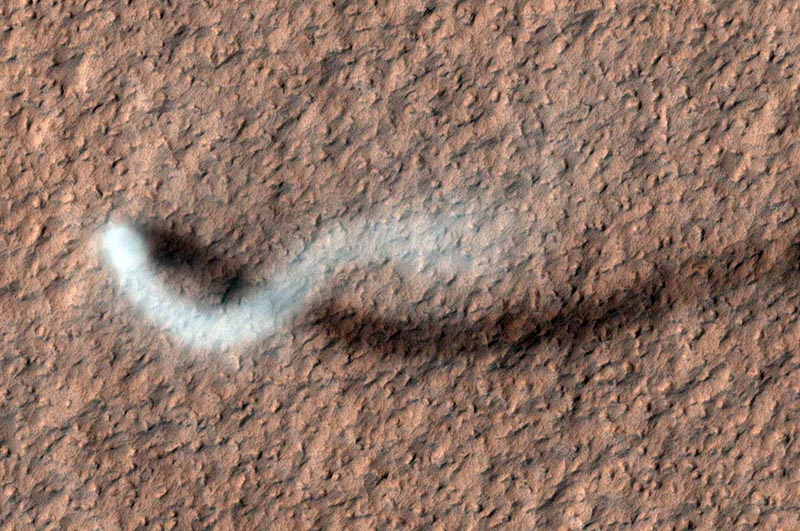New computer simulations of Martian dust devils could aid Red Planet weather forecasts
Future manned missions to Mars could face a formidable phenomenon: towering red dust devils. These columns of wind-whipped sand and dust, some small and some 10 times taller than Earth’s tornadoes, have been spied on Mars by satellites and surface sensors. However, scientists have struggled to pinpoint just how strong they can be and how often they form. Now a Japanese team, including Shinichi Takehiro of Kyoto University, have simulated dust devil formation to bring some clarity to the debate.
Dust Devil on Mars
Scientists have seen Martian dust devils in still images and in video and found their long tracks cutting across the Red Planet’s surface. For example, below is a video captured by NASA’s Spirit rover of a dust devil sweeping across Gusev Crater in 2005.
However, the number of observed dust devils is too low to make statistically sound statements about dust devil distribution.
Enter the team’s simulation. Specifically, the researchers used Martian weather parameters and dust devil dynamics to develop a high-resolution large-eddy simulation (a type of simulation used to model turbulence in a fluid, such as air). They used the simulation to generate virtual dust devils with different characteristics, including varying height, diameter, and pressure drop at the center of the vortex. The results suggest that dust devils’ vorticity—a measure of rotation—has an exponential distribution, whereas radius and circulation—a measure of air flow—have power law distributions.
Although an explorer’s encounter with a Martian dust devil could only happen far in the future, the new findings have a more immediate application. Dust devils contribute a significant amount of dust to the Martian atmosphere and thereby affect atmospheric circulation. Not only could the new simulations improve dust devil prediction, they could also help inform forecasts of Mars-wide weather.

In 2012, NASA's Mars Reconnaissance Orbiter snapped this photo of an 800-meter-tall dust devil towering above the Amazonis Planitia region of northern Mars. Scientists have now simulated the formation of dust devils to better understand their effects on Martian weather. Credit: NASA/JPL-Caltech/University of Arizona
The original English version of this article was first published as a research spotlight on Eos.org .
Citation: Stanley, S. (2016), A (dust) devil of a time -- on Mars, Eos, 97 , doi:10.1029/2016EO054507 . Published on 23 June 2016.
Paper Information
【DOI】
http://dx.doi.org/10.1002/2016GL068896
Nishizawa, S., Odaka, M., Takahashi, Y. O., Sugiyama, K. I., Nakajima, K., Ishiwatari, M., ... & Hayashi, Y. Y. (2016). Martian dust devil statistics from high‐resolution large‐eddy simulations. Geophysical Research Letters , 43 (9), 4180-4188.





